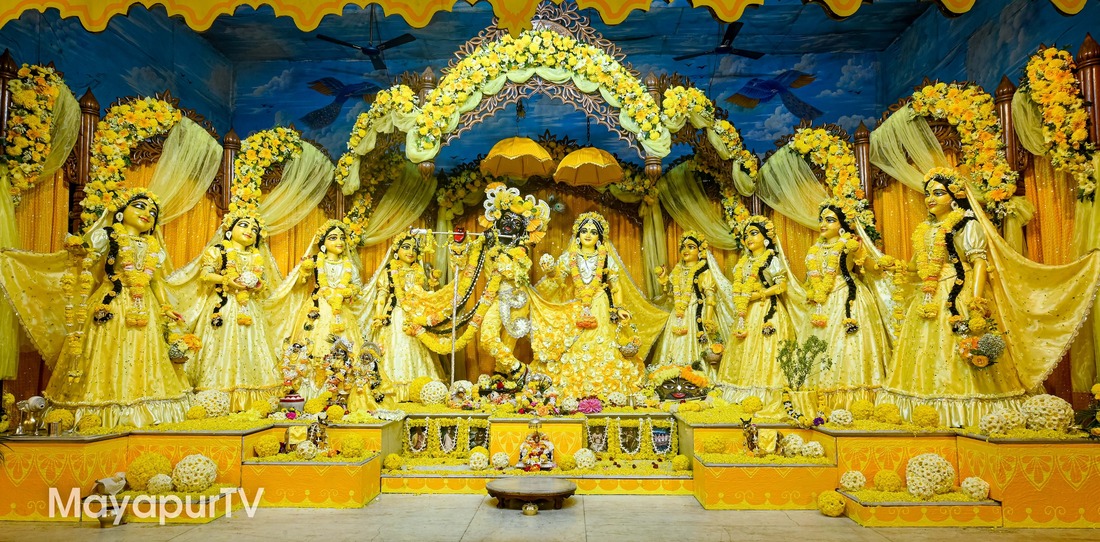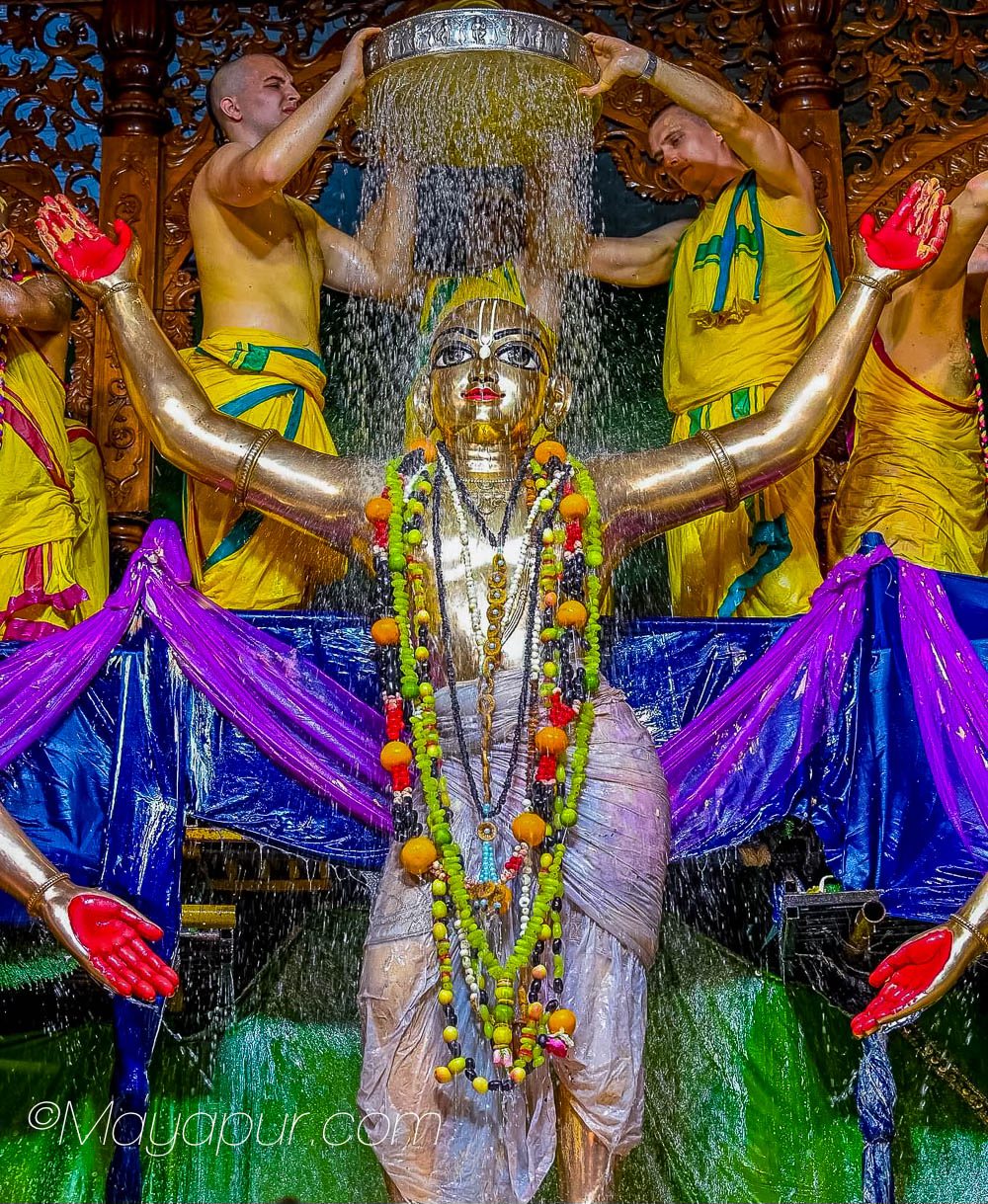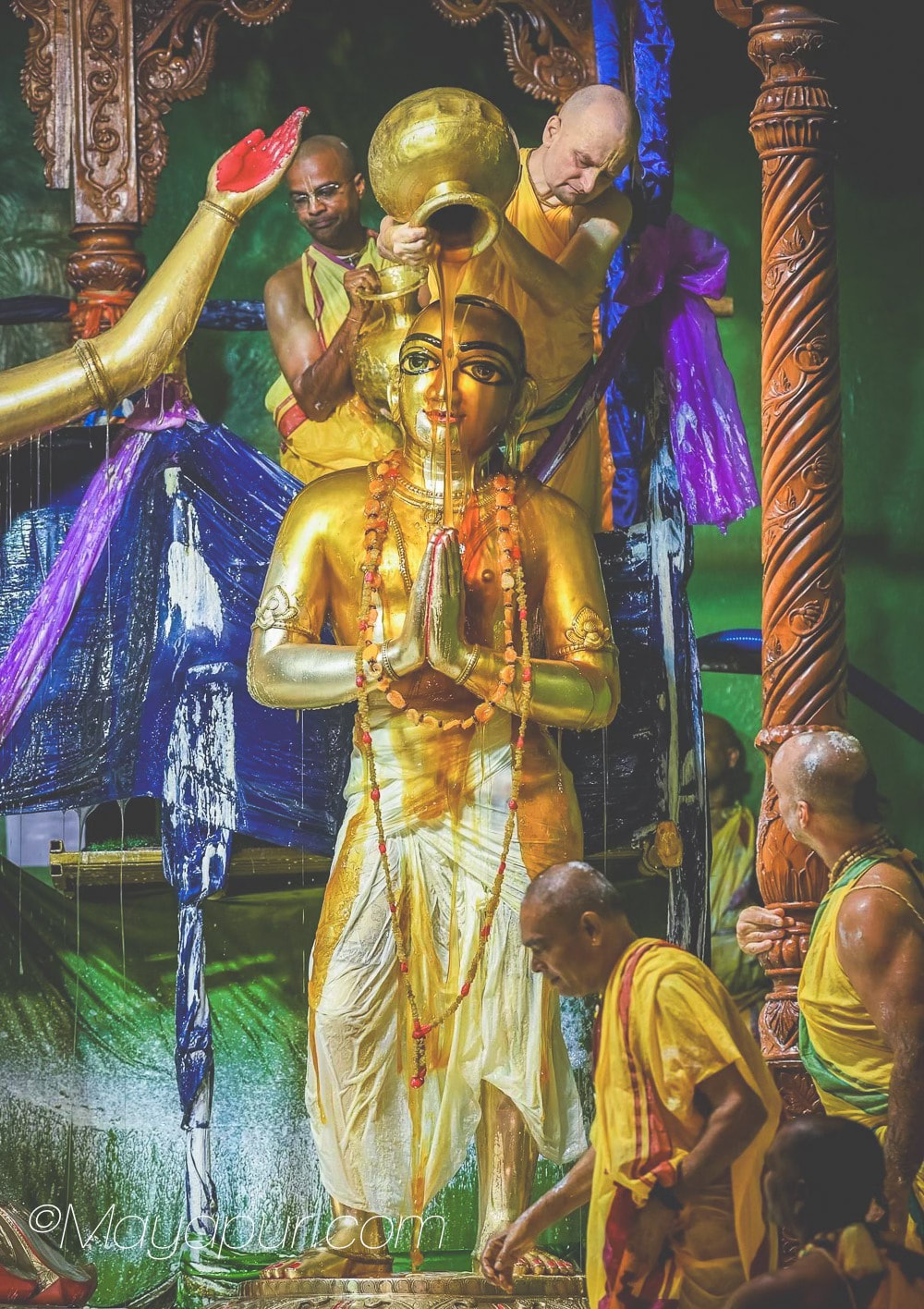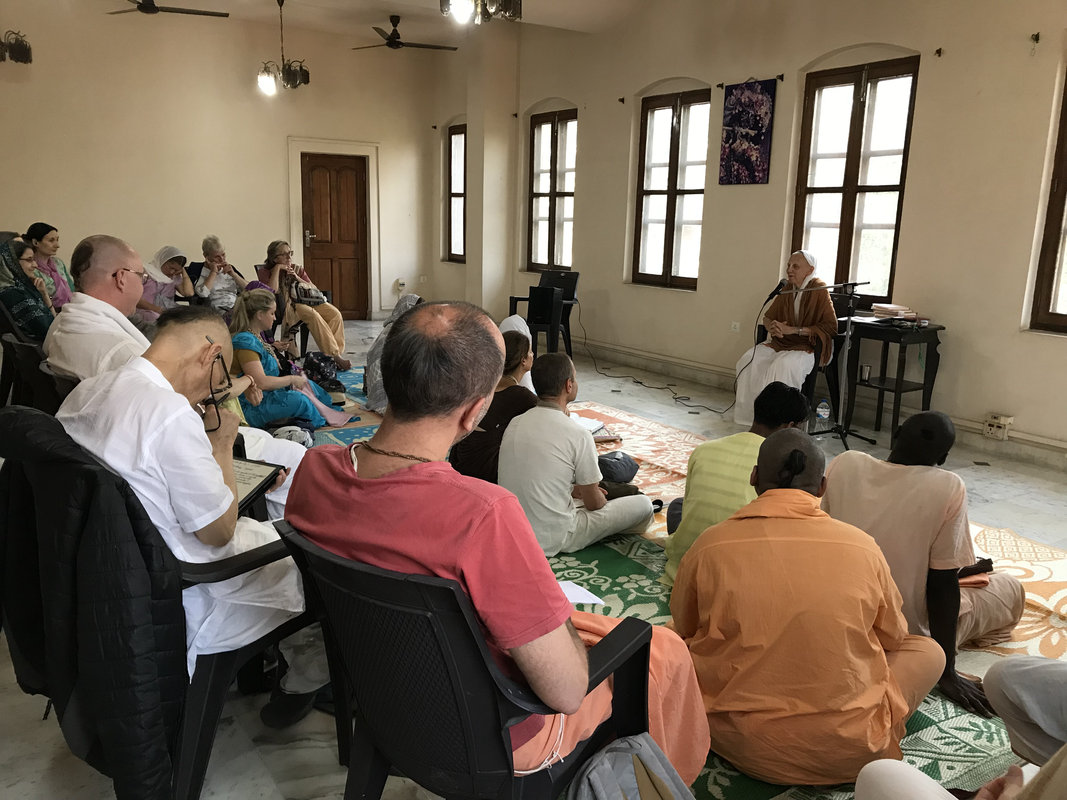During my entire stay in Mayapur I spent most mornings between 6:30am and 8am in the Pancha Tattva courtyard, offering leaflets to invite devotees to the courses and distributing my books. I had a blissful time there, connecting with many nice devotees and meeting people from all around the world who I had met before, and distributed lots of books. Book distribution to devotees - in some ways maybe even more important and blissful than to non-devotees...!
In this way, the three months passed very quickly while swimming in an ocean of devotional bliss and deep satisfaction...
The initial servings may be small, but when the guest finishes an item, we must be alert to offer more of the preparation. We should be generous in giving the guest as much of an item as he desires. A guest should never be left with an empty plate except at the very end of the meal. We may, to encourage the guest to eat more, describe the delicious taste and qualities of an item as we offer it. He may be a little shy to accept a fifth samosa, but may happily give in to our enticement.
Understanding the importance of serving in a cultured and personal way, we should never ask the assembled devotees, “Does anybody want anything else?” No. We go to each and every person individually and ask him directly – best to take the most popular dishes around once again. A devotee may feel too shy to ask for more prasadam – he may be worried about appearing to eat too much. We have surely experienced the same situation, where we contemplated having another of those tasty sweets, but felt embarrassed to admit it. Only when somebody approached and encouraged us to accept another one, did we happily agree.
Sometimes, even when offering the preparations, a person may still be a little shy and hesitant to accept another portion. Being a little experienced, we know that as soon as a person appears unsure, he actually would like more; so we affectionately push him until he laughingly agrees to accept another serving. We are not miserly – we blissfully give more and more…
When visiting Bangladesh, we can experience the culture of feeding guests with great delight – up to their neck. The host keeps offering the preparations again and again, and unless we strongly express our unwillingness to take any more, he quickly puts another portion on our plate.
Traditionally, the items are served in a particular order – according to Ayurvedic considerations, to aid the digestion. It is a whole science! Rice is served first, followed by all kinds of subjis, dhal and chapatis. The meal begins with bitter preparations such as shukta and spinach; then savouries and fried items such as pakoras are served, followed by other subjis, progressing from lighter to richer, and from wet to dry preparations. Then raitas and chutneys are offered, before the sweets are served, progressing from less to more sweet.
We may not have so many items to offer – nevertheless, we accept the basic order and start by serving rice or other staple foods; dhal or soups and vegetable preparations, and only at the end of the meal do we serve the sweets. Those items which are meant to be eaten hot should be so when served. From an Ayurvedic point of view, one should not drink during the meal, and is advised to do so one hour before or after. This will increase the digestion as the digestive liquids will remain undiluted. A well-balanced meal should always have some wet preparations such as dhal or soup, and wet subjis. In this way, there is no need for a drink. However, since many people are not in the habit of drinking before or after a meal, we usually also serve drinks.
The second-best method of serving prasadam is the buffet-style: All the preparations are arranged on a table in the right order to be served, and people queue up and indicate to the servers which item they would like to accept on their plate. Additionally, one person may go around with a smaller bowl and offer further servings of the same items to everyone present.
Devotees or guests may have a specific diet and may not be able to eat all the preparations. To simply stack all items on a plate without considering their needs is a rather impersonal, uncultured and irritating way of serving a Vaishnava. Besides, the unwanted items may end up in the bin and get wasted, which is an offence. Or, if a senior devotee leaves remnants on his plate, other devotees may eagerly accept it as maha-prasadam – a situation which may put him in an awkward position. After all, one should only allow others to accept one’s remnants if one serves them as a guru.
Whenever I receive a ready-made plate of prasadam, I usually have to remove half of the preparations, and I jokingly comment: “This is how we serve a dog – we put a full feeding bowl in front of his nose! A Vaishnava, we serve differently!” It is a lazy and lousy way of serving prasadam.
Whether we serve prasadam at the temple or in our home, there should always be plenty of it for everyone’s full satisfaction. Not having enough prasadam creates a stingy mood. Our motto should be better too much than too little… Even if something is left, it can be eaten the next day, or we can encourage visitors to take a portion home....
Although Mayapur has truly become my home, after three months it nevertheless felt good to get back on the road again....
On the 8th of March I flew on to Johannesburg/South Africa...
Your servant, Devaki dd
Please visit www.theholynameretreat.net
www.therootsofspiritualculture.net
https://www.facebook.com/instituteforspiritualculture/








 RSS Feed
RSS Feed
